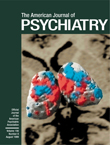There is no greater challenge in psychiatry today than treating patients with both major mental illness and substance abuse. The widespread prevalence of these co-occurring illnesses has been recognized since the early 1980s. As attention turned toward individuals with severe mental illness, it became clear that substance abuse was extremely common in this population and that it greatly complicated the assessment, treatment, and rehabilitation of these dually diagnosed patients. Deinstitutionalization has resulted in severely mentally ill individuals living in the community, where they have ready access to alcohol and other drugs. Another important factor is the more prevalent use and abuse of illegal drugs.
Clinicians found that treating severe mental illness was relatively clearcut, especially when treatment compliance was good, but that treating dually diagnosed patients was quite another matter. The purpose of this book is to present a state-of-the-art summary of what has been learned about the epidemiology, diagnosis, and treatment of this population as well as issues involving families, housing, legal considerations, and ways to maximize scarce funding.
This relatively brief but wide-ranging volume succeeds in addressing most aspects of the subject. Chapters on mood disorder and substance use, dual diagnoses among adolescents and in the elderly, and mental disorders secondary to chronic substance abuse give this book added depth. A number of chapters have clinical vignettes that are extremely helpful in clarifying the issues and techniques that the authors are discussing.
The first section of the book, Background and Diagnostic Issues, deals with epidemiology, ethnic and cultural factors, and assessment of substance abuse among individuals with chronic mental illnesses. The second section of the book, Treatment, deals with more practical issues. “Treatment of Substance Use Disorders and Schizophrenia,” by Kate Bergman Carey, and “Dual Diagnosis in the Elderly,” by Steven Bartels and Joseph Liberto, are particularly helpful. The third section, Social System Issues, includes the chapter “ ‘Double Jeopardy’: Some Legal Issues Affecting Persons With Dual Diagnoses,” by Laura M. Champlain and Stanley S. Herr, which contains useful information that is hard to find elsewhere.
Although the book is generally comprehensive, it would have been useful if there had been a more in-depth discussion of the integrated service model, the parallel service model, and the linkages service model, providing more detail about what these models consist of and the pros and cons of each. These are important topics for anyone attempting to treat this population.
Overall, this book meets its objective of presenting a multifaceted review of the considerable body of knowledge that has been acquired about individuals with both chronic mental illness and substance abuse disorders. Included are practical ways of treating these patients and the social system issues of which we need to be aware. No group poses greater challenges, and this book makes an important contribution to helping us meet these challenges.

